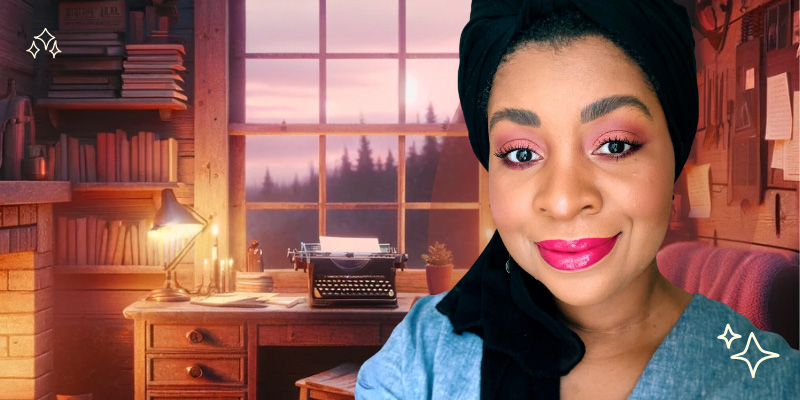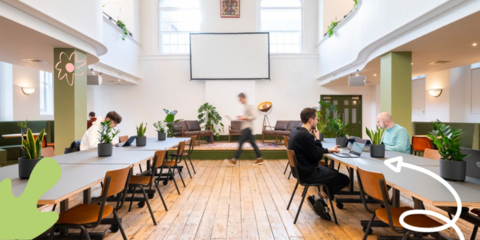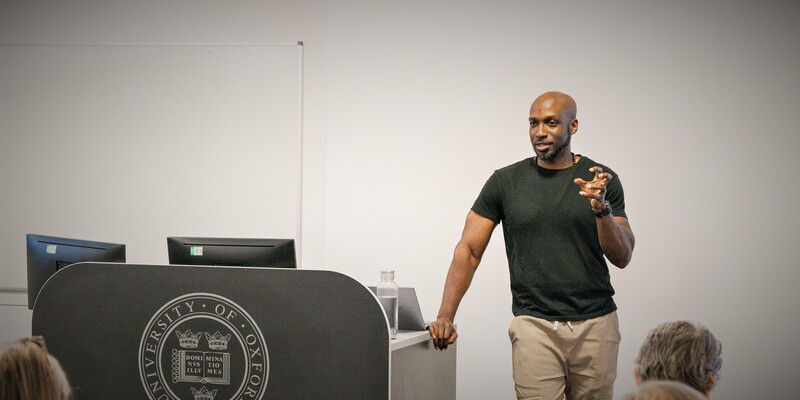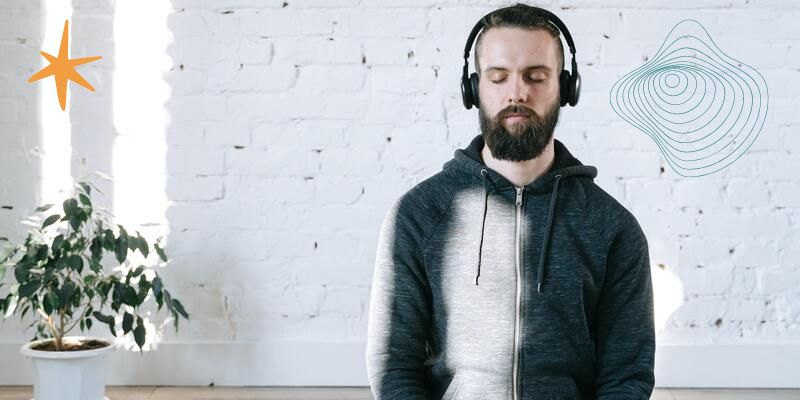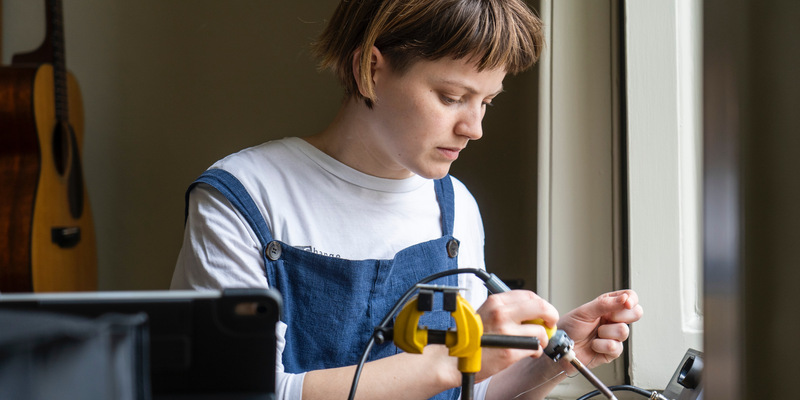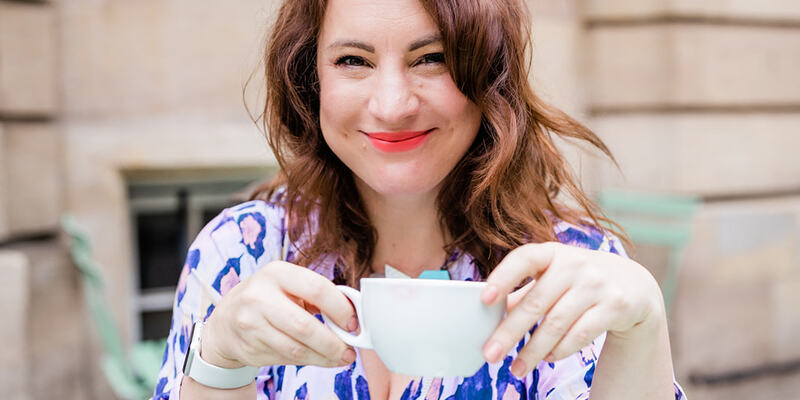Hack your happiness like a COO

Trying to juggle life, busyness and work? Here's the ultimate 5-step guide on how to organise your life and feel happier — professionally and personally.

By Cat Navarro
•
Nov 11, 2022
I’m the type of person who likes to have systems in place. I like structure, I like organisation, I like efficiency, I like to be in control.
Sometimes (OK, often...) this means I’m pretty annoying to be around. But hey, it makes me a great COO, right?
A while ago I wrote a blog post sharing my Trello system for getting shit done. And while the world has been a bit crazy lately, life personally has thrown me a few curveballs too, and people around me were also feeling a bit down. I wondered whether my approach to productivity could be applied to managing happiness.
The answer was yes. And the solution involved yet another Trello board.
At the risk of making myself appear even more annoying and strange, I’m going to share it.
Firstly, let’s define 'unhappiness'. It’s anything that is causing you to feel sad, stressed, frustrated, angry, anxious.
I wondered whether my approach to productivity could be applied to managing happiness.
Categorising my unhappiness
On my Trello board, I have five lists:
1. INCOMING
Where I dump any unhappy thoughts that come to mind.
2. AT PLAY
Things that are actively causing me unhappiness.
3. AT RISK
Things I worry could cause me to be unhappy.
4. LET IT GO
No, not a song from Frozen, but things I need to forget about, because they are trivial, not real, or because I genuinely can not do anything about them.
5. GONE
Things that are no longer making me unhappy - either because they went away on their own, I successfully let them go, or I solved them. Like a boss.
How I use this system
Step 1 – acknowledge
When something starts to make me unhappy, I immediately put it into INCOMING. This act alone creates distance between me and the item. It’s no longer on my mind keeping me up at 3am, it’s on my Trello board.
Step 2 – is this happening?
Sometimes, things that haven’t yet happened (and may never happen) can feel very real. It’s important to differentiate between what’s an issue, and what’s a risk. That’s not to say risks shouldn’t be managed and avoided, but they shouldn’t consume you.
I move the item onto AT PLAY or AT RISK.
Step 3 – assess
I triage the item. Treating the issue or risk in a somewhat clinical way, avoids me getting too emotional about it, or at least, it allows me to objectively assess its gravity, and what could be done about it.
I assess the item by giving it a label (yes, I’ve set them all up as a template in Trello): cool, moderate, significant, extreme. This step requires a bit of soul searching, but the process of doing it can actually make you change the label.
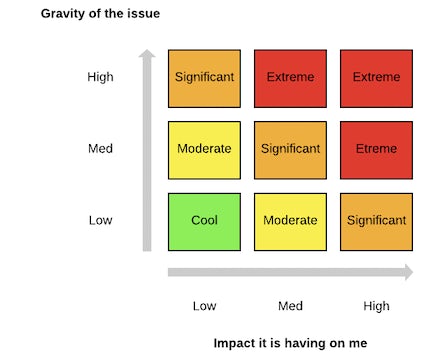
For example, the other night there were people on my building’s shared rooftop and the next morning I saw they'd left all their empty beer bottles lying around.
I was soooooo mad. I couldn’t comprehend how people could be so inconsiderate. Maybe it was a minor thing, but it’s the type of thing that can affect my mood and behaviour for a good few hours. Because little things do make your blood boil and affect you.
But in using my score card, I had to admit that the gravity of the issue was low (for example, it doesn’t matter compared to what’s happening in the news), and the impact it was having on me was moderate. I was really annoyed, and felt that this kind of behaviour shouldn’t be left ignored… but it wasn’t as though someone had cut off my limbs, leaving me unable to walk ever again.
In fact, the more I thought about it, the more I had to admit that this should probably be labelled 'cool'.
Anything that’s labelled 'cool' immediately moves to my LET IT GO list.
Step 4 - action
In the case of the example above, I cleaned up the beer bottles and notified building management. The effort that took was less than the hours I would have spent fuming over it.
But for other issues that may not be the case, especially with those labelled 'significant' or 'extreme'.
So the next step is to think about what can be done. Maybe you’re feeling a bit lonely and wishing you had more friends? What MeetUp groups could you join?
Maybe environmental issues are stressing you out? Could you try being vegan? Could you learn to ride a bike? Could you pick up litter from the streets?
Record the actions within the item’s card in Trello.
Your board could end up looking something like this:

Step 5 – review, reassess
Each week, I review what’s at play, and what’s at risk. I review the labels I’ve applied and often I decide the label needs to change. I also check-in on the actions I’ve set, and remind myself of the things I need to let go. The process keeps me and my happiness in check, and it’s satisfying to see the GONE list grow.
Is happiness a choice?
At FLOWN we encourage blocking time for deep work, as well as for shallow work. What if we also blocked time for happiness management?
Shit things are going to happen in life. That’s a given. We can choose to do nothing and let them consume us, or we can choose to actively resolve them, or lessen their impact on us.
Routines, reflection, processes… these things WORK. So why not apply it to arguably the most important aspect of our lives: our happiness?
But hey, if my system doesn't work for you, there's always these notebooks...





